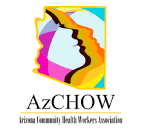VARIOUS PROGRAMS TO PROVIDE SUBSTANTIAL RESOURCES TO SUPPORT ARIZONA’S PUBLIC HEALTH WORKFORCE
The White House released a fact sheet and statement to announce a significant immediate and long-term investment in the public health workforce. The $7.4 billion in funding is split into two parts. About $4.4B of the $7B will be targeted toward state and county health departments to hire staff “to support COVID-19 response efforts”
The other $3B will be used to create a new grant program that will “facilitate federal investment in the people and expertise needed at the state and local levels to expand, train, and modernize the public health workforce for the future.”
With a nod to health equity, the CDC stated that “All awardees of this American Rescue Plan funding will be asked to prioritize recruiting individuals from the communities they will serve and from backgrounds underrepresented in critical public health professions. Here’s the fact sheet released by the White House about the initiative.
FUNDING TO HIRE PUBLIC HEALTH WORKERS
The top line announcement says that $4.4B These programs are divided into support for state and county health departments, money to hire school nurses, creating a Public Health AmeriCorps, boosting the Epidemic Intelligence Service, and enhancing the public health laboratory workforce.
Public Health Department Staffing
$2B of the $4.4B is targeted toward programs “to expand the public health workforce to support vaccinations, testing, contact tracing, and community outreach”. CDC’s announcement specifically identifies contact tracing, case management, and support outbreak investigations as core uses for those funds. Arizona’s 2-year allocation is $43,570,409.
This summary by the Association of State and Territorial Health Officials (ASTHO) says that the goals are to establish, expand, train, and sustain the public health workforce to support jurisdictional COVID-19 prevention, preparedness, response, and recovery initiatives, including school-based health programs. CDC expects public health agencies to use the money to recruit, hire, and train personnel to address projected jurisdictional COVID-19 response needs over the performance period, including hiring personnel.
CDC recommends that states use CDC’s Social Vulnerability Index data and tools to inform jurisdiction COVID-19 planning, response, and hiring strategies. CDC expects that at least 25% of the jurisdictional award will support school-based health programs, including nurses or other personnel.
Of the remaining 75% CDC expects that at least 40% will support local hiring through local health departments or community-based organizations.
The allowable costs, deliverables, metrics, and allowable activities are all presented by ASTHO in CDC’s Crisis Response Cooperative Agreement: COVID-19 Public Health Workforce Supplemental Funding Guidance.
Editorial Note: Ideally, Arizona would elect to do something creative with these funds that would have a longer lasting impact that just short-term hiring of public health staff. For example, we could potentially make changes to the Arizona Loan Repayment Program to add public health workers to the list of qualifying professions. These federal funds could be used to finance a new loan repayment program in exchange for a commitment by new MPH graduates to work in a rural county health department for a few years. There are probably other good ideas- my point is I’d love to see something more creative then just shoveling out money for short-term staff (especially when you consider that the waning days of the pandemic are here and the need for contact tracing and the like are becoming less acute).
School Nurses
CDC is also targeting an additional $500M “… to hire school nurses to help schools safely reopen and remain open for in-person instruction”. Arizona’s proportionate share of those funds would be about $10M, which would be enough to hire about 150 school nurses for one year. It’s unclear whether that money would go to the Arizona Department of Education or the ADHS.
Public Health AmeriCorps
About $400M of the $4.4B will go toward creating a Public Health AmeriCorps. This will be a partnership between CDC and AmeriCorps. The goal is to “… build a diverse pipeline for the public health workforce and provide direct service to communities across the country”. AmeriCorps says this will fund 5,000 Public Health AmeriCorps positions over the next 5 years. Grants will be awarded through a competitive process with the first competition this fall.
Epidemic Intelligence Service
CDC is allocating $245M of the $4.4B to increase funding for the Epidemic Intelligence Service, the Undergraduate Public Health Scholars Program, and the Emerging Infectious Diseases RISE Fellowship, which offers students from underrepresented background the opportunity to study infectious diseases and health disparities.
Public Health Laboratory Workforce
About $337M will be used to strengthen the public health laboratory workforce pipeline by expanding fellowship programs and implementing a new program for undergraduate students to gain experiences in public health laboratory settings. These funds don’t look to me like they will be flowing directly to state health department labs.
GRANTS TO EXPAND THE FUTURE PUBLIC HEALTH WORKFORCE
The other portion of the $7.4B is a $3B allocation to “… create a new grant program that will facilitate federal investment in the people and expertise needed at the state and local levels to expand, train, and modernize the public health workforce for the future”.
This new (and large) grant program will “… provide under-resourced health departments with the support they need to hire staff and build a strong public health workforce”. This grant program will offer community health workers and others hired for the COVID-19 response an opportunity to continue their careers beyond the pandemic as public health professionals.
CDC will be convening federal, state, local, and territorial public health experts to inform the design and focus of this new grant program. CDC says the goal of the program is to support the nation’s public health infrastructure, particularly in lower-income and underserved communities.
